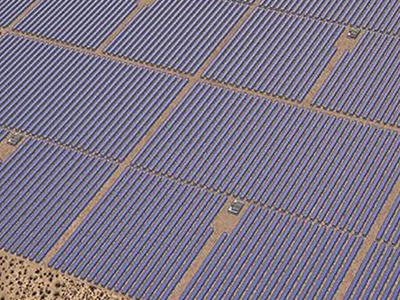Components of a lightning protection system
Lightning air terminals or 'rods' are actually only a part of a full lightning protection system. In fact, the top terminals may play the minor important role in a complete system. A lightning protection system consist of three major components:
- Rods or 'Lightning Air Terminals' - The small, vertical attractors designed to act as the 'terminal' for a lightning discharge. Terminals can be found in different shapes, sizes and designs. Most are topped with a tall, pointed needle rods or a smooth, polished sphere balls. The functionality of different types of lightning terminals and even the neccessity of the terminals altogether, are subjects of many scientific discussions.
- Conductor Cables - Heavy cables which carry lightning current flow from the terminals to the ground. These cables are run along the tops and all around the edges of roofs-installation location- then down one or more corners of a building to the earthin rod(s).
- Earth Rods - Long, thick, heavy mainly copper or copper coated rods buried mostl 2-3 meters deep into the earth around a protected structure. Conductor lightning cables are connected to these earth rods to complete a safe pathway for a lightning discharge around a structure.
The conductor cables and earth rods are the most crucial components of a full lightning protection system, accomplishing the main objective of diverting-transferring the lightning current safely past a building structure. The 'lightning air terminals' themselves, which is, the pointy vertically-oriented terminals along the edges of roofs, play much of a role in the functionality for a full system, though, without earth rods it remains useless. A full protection setup, given efficient cable coverage and good earthing, would still work sufficiently without the air terminals.

Lightning protection systems - What they do and don't do
A lightning protection system's main goal is to ensure safety to a building and its residents if/when the lightning discharge happens to hit it directly, a task accomplished by providing a good, healthy and safe path to ground for the lightning to follow.
Contrary to the myths, lightning protection systems:
- Don't attract lightning directly
- Don't and cannot dissipate or prevent lightning by 'draining' a storm of its charge
- Mostly with itself don't offer surge protection for sensitive electronics
- Do offer fire protection and structural damage protection by preventing a hot, explosive lightning channel from passing through building materials
- How a lightning protection system works
Without a designated pathway to reach to the ground, a lightning strike may choose to instead utilize any conductor available at the moment present inside a house or building. This may include the phone, cable, or electrical lines, the water or gas pipes, or (in the case of a steel-framed building) the structure itself. Lightning strike usually will follow one or more of these pathways to the ground, occasionally jumping through the air via a side flash to reach through a better-grounded conductor ways. As a result, lightning presents several hazardous events to any house or building:
Fire- Fire can/may begins anywhere the exposed lightning channel engages, penetrates or comes near flammable material (wood, paper, gas pipes, etc) in a building - including structural lumber or insulation inside walls and roofs. When lightning strike follows electrical wiring and cable routes it will often overheat or even melt the wires, creating a fire dangers anywhere along affected circuits.
Side flashes - Side flashes can jump through rooms, living spaces and possibly injuring anyone who happens to be in the way of the lightning discharge. They can also ignite materials such as a gasoline can in a garage or gas tanks.
Damage to building materials - The explosive shockes wave created by a lightning discharge can blow out sections of walls, installed infrasructure items, fragment concrete and plaster, and shatter nearby glass.
Damage to appliances electronics - Televisions, VCRs, microwaves, phones, lamps and just about anything plugged into an affected circuit may/can be damaged and may not be repaired again. Electronic devices and computers are especially vulnerable to such lightning shocks.
Adding a protection system doesn't prevent a lightning strike, but gives it a better, safer and healthier pathes to the ground. The lightning air terminals, cables and ground rods work together to carry the such big currents away from the structure, buildings thus, preventing fire and most appliance damages.






